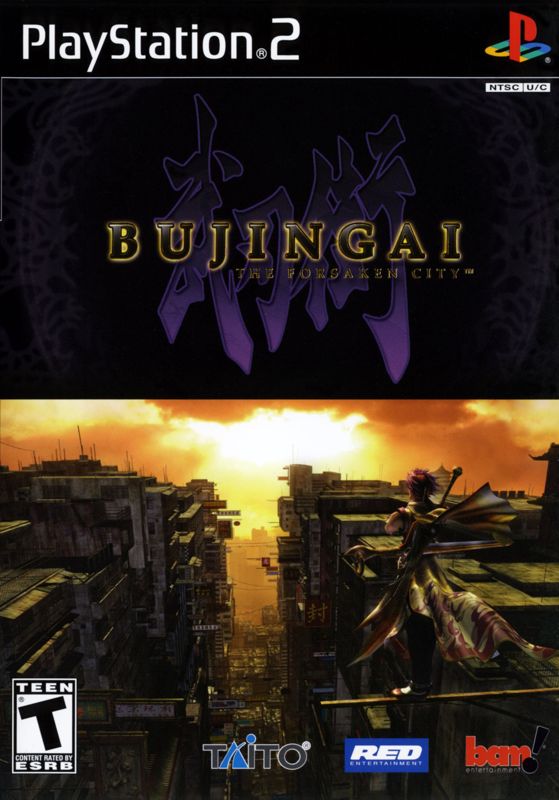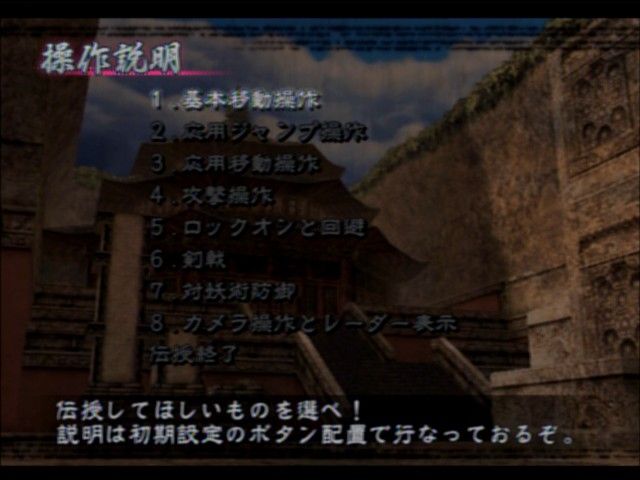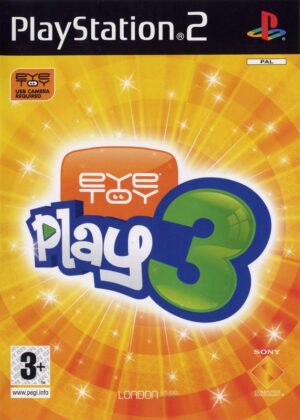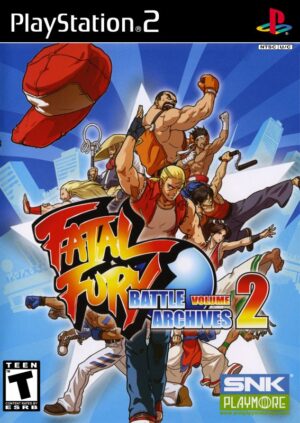Retro Replay Review
Gameplay
Bujingai: The Forsaken City channels the frenetic energy of classic hack-and-slash titles, delivering a combat system that will feel instantly familiar to fans of Devil May Cry. You assume the role of Lau, a graceful warrior whose swordplay is both fluid and punishing. Each encounter hinges on chaining light and heavy attacks into stylized combos, seamlessly weaving in elemental magic for extra flair and damage. Whether you’re unleashing a rapid string of slashes or launching a devastating arcane strike, the core loop never loses its momentum.
(HEY YOU!! We hope you enjoy! We try not to run ads. So basically, this is a very expensive hobby running this site. Please consider joining us for updates, forums, and more. Network w/ us to make some cash or friends while retro gaming, and you can win some free retro games for posting. Okay, carry on 👍)
Traversal in Bujingai leans heavily on verticality and agility. Lau can rebound off walls, perform mid-air dashes, and scale structures to gain the high ground. These mechanics not only spice up ordinary skirmishes but also inject fresh life into exploration, transforming ruined skyscrapers into labyrinthine arenas for vertical combat and puzzle-like platforming. Secret areas often reward you with new spells or upgrade materials, encouraging you to experiment with every aerial move in your repertoire.
Boss battles serve as the true litmus test of your mastery. From hulking shadow creatures to corrupted mechanized warriors, each boss demands a different approach—sometimes favoring dodgy precision, other times requiring aggressive, in-your-face offense. The difficulty curve is generally well-paced, with mid-game encounters providing just enough challenge to keep you on your toes without feeling unfair. Replay value is bolstered by a ranking system and unlockable difficulty modes for those hungry for perfection.
Graphics
Bujingai’s visuals capture the bleak beauty of a post-nuclear world. Ruined cityscapes stretch across the horizon, bathed in a perpetual twilight that underscores the world’s decay. Crumbling concrete, twisted metal girders, and flickering neon signs create a brooding atmosphere, ensuring every level feels like a tableau of humanity’s downfall. Even in the darkest corners, small details—like a lone flicker of moss or a distant, broken billboard—add layers of environmental storytelling.
The character models are equally striking, most notably Lau, whose design is directly inspired by J-POP icon Gackt. His long coat, flowing hair, and lean silhouette cut a heroic figure against the desolation. Subtle facial animations give weight to his determination, while Lei’s transformation into a dark antagonist is marked by unsettling crimson glows and jagged armor, contrasting sharply with Lau’s cooler palette. Every attack and dodge is accompanied by fluid motion—animations that hold up remarkably well, even by today’s standards.
Particle effects and lighting play a pivotal role during combat. Sword strikes leave behind shimmering afterimages, and magical spells conjure bursts of flame, ice, or energy that illuminate the environment in strikes of vivid color. While the PlayStation 2-era hardware occasionally struggles with frame rate dips during the most explosive sequences, these moments are brief and overshadowed by the sheer spectacle on display. For a game of its generation, Bujingai remains a visual standout.
Story
The narrative of Bujingai: The Forsaken City unfolds in the year 22XX, where a catastrophic reactor meltdown has thrust the world into darkness. Civilization collapses, and what remains is a sprawling wasteland haunted by shadowy creatures born of the nuclear catastrophe. It’s within this bleak setting that we meet Lau, a lone warrior determined to thwart his former friend Lei, who has embraced the darkness and seeks to annihilate the last vestiges of hope.
Lau’s journey is as much personal as it is epic. Modeled after the real-world pop sensation Gackt, Lau brings a quiet intensity to every cutscene and dialogue exchange. His relationship with Lei serves as the story’s emotional fulcrum: once inseparable comrades, their bond is shattered by power and betrayal. Flashbacks pepper the campaign, illuminating their shared past and driving home the stakes whenever you step into battle against corrupted minions that once fought alongside you.
Storytelling is delivered through a mix of in-engine cutscenes and voice-acted dialogue. While some lines veer into melodrama, the overall writing remains engaging, blending action set-pieces with moments of introspection. The game’s pacing ensures you never spend too long away from the combat you came for, yet each narrative beat lands just enough to give context to your blade-wielding rampages. It’s a classic hero-versus-friend-turned-villain tale, elevated by strong performances and thematic resonance.
Overall Experience
Bujingai: The Forsaken City is a testament to how tight combat, arresting visuals, and a personal story can coalesce into an unforgettable action adventure. The controls are responsive, the combo system is deep without being intimidating, and every new spell or weapon upgrade feels meaningful. Exploring the devastated urban landscapes never grows stale, thanks to thoughtful level design and secrets that reward curiosity.
No game is without flaws—camera angles can occasionally obscure the action in narrow corridors, and there are moments where enemy variety feels a bit sparse. However, these blemishes are rare and don’t detract significantly from the core thrill. If you can overlook a few technical inconsistencies, you’ll find a game that delivers on its promises of stylized combat and dramatic tension.
For fans of fast-paced hack-and-slash adventures, particularly those who enjoyed early entries in the Devil May Cry lineage, Bujingai offers a distinct flair all its own. Its blend of acrobatic traversal, sword-and-spell combat, and a poignant story driven by friendship and betrayal makes it a compelling pick for anyone seeking a dose of post-apocalyptic action with a touch of J-POP star charisma. Whether you’re revisiting a classic or discovering it for the first time, Bujingai remains a worthy journey through darkness and redemption.
 Retro Replay Retro Replay gaming reviews, news, emulation, geek stuff and more!
Retro Replay Retro Replay gaming reviews, news, emulation, geek stuff and more!









Reviews
There are no reviews yet.